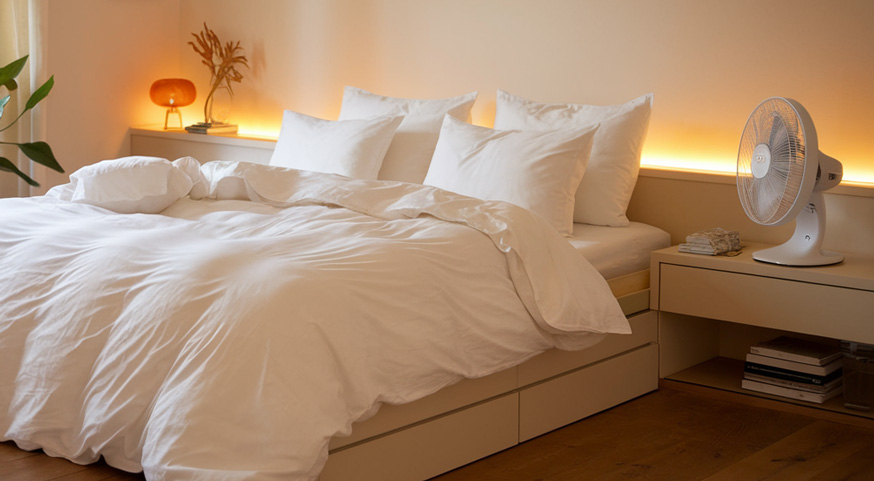Posted by Stefan Hunter on May 02, 2017
Down vs Synthetic: What Makes a Superior Pillow?
Size, style, color, fill, density — who knew pillow shopping could be so complex?
There are so many options available that it can be difficult to choose, but, as with most things, it’s what’s on the inside counts the most. When you’re picking pillows, you want the fluffiest, most comfortable pillow you can find; and that means finding the right fill.
The type of fill determines how flexible, durable and comfortable a pillow will be. While the choices may seem endless, from carefully cultivated organic cotton to man-made materials concocted in laboratories, when you want superlative comfort, it’s all between down and down alternatives.
So, between down pillows and others with synthetic fill, what is the best choice?
Well, the truth is that it depends on what you want. Both types of pillows come in high-end and low-end quality; both have advantages and disadvantages, too.
Dr. Clete A. Kushida, director of the Stanford University Sleep Center, explains that there is no research available that proves one type is objectively superior, it comes down to personal choice. But understanding the basics of both might help you decide what is right for your bed.
What Is Down?
Think down pillows are just a bag of feathers? Think again. Feather pillows are made from the outer feathers of birds, feathers that still have quills that can work their way through your pillow to poke you while you sleep. Down, on the other hand, is something else entirely. While down is from birds it’s not what you may picture when you think of feathers. Down is the fine layer of fluffy tufts found underneath the more rigid contour feathers on birds.
Down is remarkably soft and surprisingly durable. Compared to feathers and most other fills, both natural and synthetic, down has superior loft (i.e. the height of the pillow as it lays flat on the bed). It will maintain its loft no matter how many nights you sleep on it. Down has breathability, as well. It is less likely to get musty and stale smelling.
What Makes a Fill Synthetic?
This is where things get complicated. Synthetic means the fill consists of a man-made material, but fill types vary from cheap polyester to Primaloft®, which is a polyester filling made to mimic the qualities of down.
Primaloft® is what pillow manufacturers refer to as a down alternative material. High quality synthetic fills like Primaloft tend to hold their form well, just like down. It is also antimicrobial, so it prevents the growth of bacteria, making the pillow hypoallergenic and a practical choice for people with allergies or asthma.
Other types of synthetic pillow filling include:
- Foam– high density foam provides better support but less breathability
- Memory foam– molds to your head throughout the night. Memory foam has the tendency to smell unpleasant when it gets warm; which is a regular occurrence, according to WebMD.
- Latex– offers firm support and resists mold and dust
Which is Better: Down or Synthetic?
There is no right or wrong answer. Down has a certain luxury to it that makes it worth any extra money. Some people prefer a mix of feathers and down to get a combination of support and softness. Down also tends to shift naturally with the sleeper which means no more waking up in the middle of the night to punch your pillow back into shape.
If the price tag of down is too much to handle, then a down alternative like Primaloft® is a practical choice. Both down and synthetic fill are machine washable; though down should be washed very infrequently. Just follow the instructions on the label when washing.
How to Pick the Right Pillow
When it comes to sleep comfort, fill is critical and you can’t beat the comfort of down or down alternative pillows. To learn more about pillow fills watch our video.











